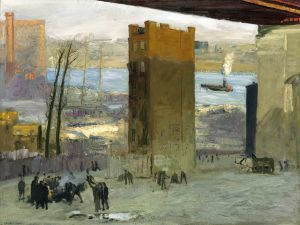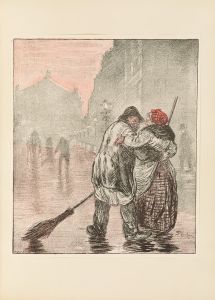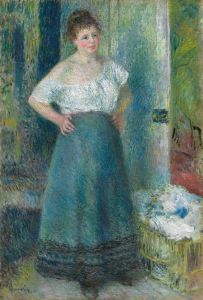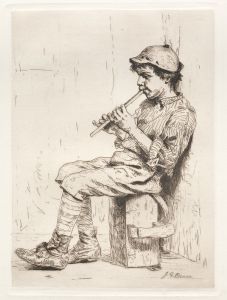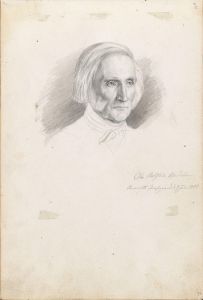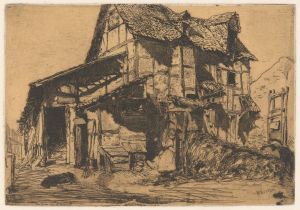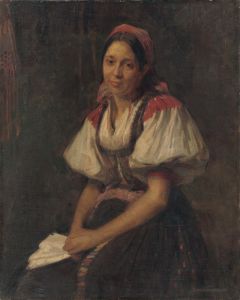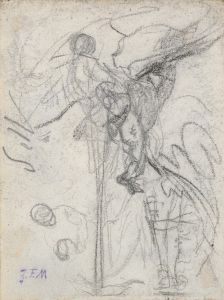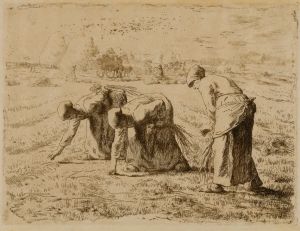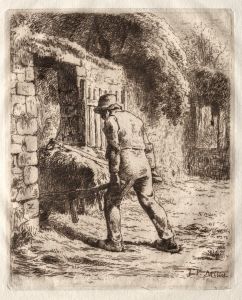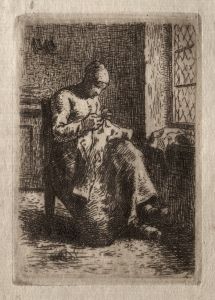
The Carder
A hand-painted replica of Jean-François Millet’s masterpiece The Carder, meticulously crafted by professional artists to capture the true essence of the original. Each piece is created with museum-quality canvas and rare mineral pigments, carefully painted by experienced artists with delicate brushstrokes and rich, layered colors to perfectly recreate the texture of the original artwork. Unlike machine-printed reproductions, this hand-painted version brings the painting to life, infused with the artist’s emotions and skill in every stroke. Whether for personal collection or home decoration, it instantly elevates the artistic atmosphere of any space.
Jean-François Millet, a prominent French painter and one of the founders of the Barbizon school, is renowned for his depictions of peasant life. One of his notable works is "The Carder" (French: "La Cardeuse"), which was completed in 1863. This painting exemplifies Millet's dedication to portraying the dignity and labor of rural workers, a theme that runs consistently through his oeuvre.
"The Carder" depicts a woman engaged in the traditional task of carding wool, an essential step in the process of preparing wool for spinning. The carding process involves disentangling and cleaning the fibers, making them suitable for spinning into yarn. This task was typically performed by women in rural communities, and Millet's choice to depict this scene underscores his focus on the everyday lives of peasants.
In the painting, the woman is seated, absorbed in her work, with a calm and focused expression. She is dressed in simple, modest clothing, appropriate for her labor-intensive task. The setting is sparse, with minimal background details, which draws the viewer's attention to the figure and her activity. The subdued color palette and the use of light and shadow enhance the sense of realism and the quiet dignity of the scene.
Millet's technique in "The Carder" is characterized by his use of soft, blended brushstrokes, which create a sense of texture and depth. This approach helps to convey the tactile quality of the wool and the physicality of the carding process. The composition is balanced and harmonious, with the figure centrally placed, emphasizing her importance and the significance of her work.
"The Carder" reflects Millet's broader artistic and social concerns. During the mid-19th century, France was undergoing significant industrial and social changes, which often marginalized rural communities and their traditional ways of life. Millet's paintings, including "The Carder," serve as a poignant reminder of the value and dignity of rural labor, offering a counter-narrative to the rapid industrialization and urbanization of the time.
Millet's work was influential in the development of Realism in art, a movement that sought to depict everyday life with honesty and without idealization. His focus on peasant subjects was both a personal and political statement, highlighting the harsh realities and inherent worth of rural laborers. "The Carder" is a testament to Millet's commitment to these themes and his skill in rendering them with empathy and respect.
Today, "The Carder" is held in high regard as an example of Millet's masterful ability to capture the essence of peasant life. It continues to be studied and admired for its artistic qualities and its social commentary. The painting is part of the collection at the Musée d'Orsay in Paris, where it is accessible to the public and serves as an important piece of 19th-century French art history.





